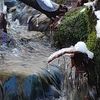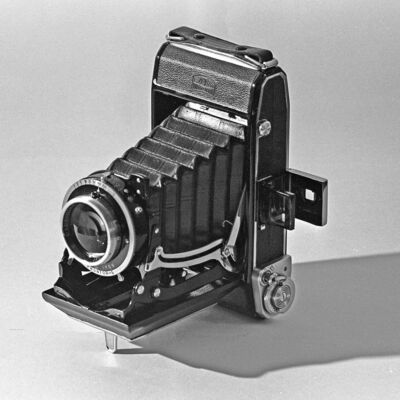How do you approach composition in your photography?
Jan 20, 2024 23:32:56 #
Most of my photos are made with my smartphone and I compose them with the screen, I do very little post processing.
BTW welcome to the forum and I hope you post some of your photos soon.
BTW welcome to the forum and I hope you post some of your photos soon.
Jan 20, 2024 23:36:24 #
larryepage wrote:
For me, this divides several ways... br br Landsc... (show quote)
There are some strange distinctions there. I would never think of railroad photography as a special category that has particular rules. And architectural photography has no real artistic value? Maybe if you’re doing real estate photography, but real architectural photography can be some of the most creative and interesting stuff I’ve seen. The thing is there aren’t different rules for different genres. Maybe there are guidelines about things that are important, like eyes in focus for portraits, but as for composition genre doesn’t matter.
Jan 21, 2024 01:37:56 #
SuperflyTNT wrote:
There are some strange distinctions there. I woul... (show quote)
Yep. A good sense of composition works for just about any scene. Composition is the structure of an image, the way subjects and objects are arranged in the space of the frame. It's the art of inclusion and exclusion and emphasis or deemphasis.
Jan 21, 2024 02:44:44 #
SuperflyTNT wrote:
... some would say it’s not a rule of thirds composition.
Indeed. I wonder how many sports photographers adhere strictly to the ROT. Racetracks would be another place I'd expect to see frequent centering.
Jan 21, 2024 02:55:57 #
btbg wrote:
Actualky that diagram is clear without further explaination. The cirlce is placed such that the center of the circle is exactly on a line that runs 90 degrees from the open end of a 45 degree angle. The top line of the 45 degree angle must also bisect the center point of the circle. Doesnt matter the size of the circle as for both the top line of the angle and the center of the circle to bisect the same point everything will line up. The second arc then just goes tangent to the circle.
ROTFLMFAO !
Jan 21, 2024 03:17:36 #
Herbie1924 wrote:
In color slide days, one composed in the camera's viewfinder - & still do today.
To better assist you, send some of your pics to crop.
To better assist you, send some of your pics to crop.
All that "back in the day" color slide pride stuff gets more absurd every time another hobbyist brings it up.
The "Post Processing" of color slides was quite routine. It was similar to darkrom work, altho easier and cheaper to set up. Quite oddly, BW darkrooms were vastly more popular amongst hobbyists than was the color slide "lightroom".
That acoarst led to this ridiculous and cultish notion about making color slides demanding an absurd level of mastery of "camera craft", due to the ignorant belief that a SOOC color slide is a unique hermetically self contained fully finished end product.
The above refers to chromes for projeccton. Obviously if intent is print media publication no "lightroom" is involved, cuz the printing processes provide all the necessary PP.
Jan 21, 2024 06:01:02 #
Randyfrieder
Loc: Long Island, New York
MrBob wrote:
If you are a skilled typist do you THINK about where the keys are located... ? Your BRAIN knows; it has learning ability. When it is right, you KNOW and FEEL it... Of course there are ALWAYS scenes within the scenes...
Yes, what he said!!
Jan 21, 2024 06:31:21 #
E.L.. Shapiro wrote:
I like that approach! For some folks sometimes, h... (show quote)
Food for thought. Thanks very much!
--
Jan 21, 2024 08:03:08 #
Orphoto wrote:
Wasn't familiar with the name, had to look him up. Linda -- John Telford??
Perhaps more Guy Tal.
Jan 21, 2024 08:05:37 #
larryepage
Loc: North Texas area
SuperflyTNT wrote:
There are some strange distinctions there. I woul... (show quote)
My point was that composition in photography is different from composition in the more additive arts. Painters have the freedom to "build" a composition however they choose. In photography, the primarily available tools are position, framing, and cropping. At least two, and maybe three of those are available at the time of exposure. Only framing and cropping are available later.
I spoke of railroad photography because I do it. It's what got me interested in photography. Most railroad photographers aren't really very good at it. They are just documenting something interesting which they have seen. Very few viewers find any interest in their photographs unless they are interested in the locomotive or whatever that is (generally quite poorly) recorded. I'm not a lot better, but I do try to make railroad photographs that others might want to take a look at.
Photographing architecture is like photographing statues. Its derivative, not artistic. And of course there are exceptions, but not very many. But it's still much more documentation or photojournalism than artistry. That doesn't mean that the craft can't or shouldn't be good, just that it's not usually art unless there are special circumstances of some sort.
Finally...there are many subjects that are worth being photographed but that offer no opportunity to even support any sort of classical composition. That certainly doesnt mean that we do not photograph them. I have photographs of a number of interesting geological formations. Nature, unfortunately, created them in places with boring foregrounds or distracting and overpowering backgrounds. None of that means that I don't take a photograph. Nor do I remove those distractions. They are part of the experience.
Compositional rules exist for good reason. But those reasons are not to enslave us.
Jan 21, 2024 09:35:10 #
larryepage wrote:
"Not very many exceptions..." Larry, I know you just can't help yourself with your sweeping generalizations and eagerness to quantify or find order in what can't be quantified or labeled. But, seriously, would you please stop and think? Or at least educate yourself a skosh:Photographing architecture is like photographing statues. Its derivative, not artistic. And of course there are exceptions, but not very many. But it's still much more documentation or photojournalism than artistry...
https://amateurphotographer.com/technique/fine-art-architecture-photography-guide/
https://www.sharontenenbaum.com/architecture
https://www.topazlabs.com/learn/architectural-photography-julia-anna-gospodarou
https://www.stlmag.com/culture/visual-arts/experience-architectural-photography-in-its-most-abstract-fo/
https://luminous-landscape.com/abstract-architectural-photography/
http://www.graphicmania.net/amazing-black-and-white-modern-architecture-photography/
https://www.australianphotography.com/photo-tips/the-magic-of-mono-tips-for-creative-architecture-bandw-shots-part-two
Need more?
Jan 21, 2024 10:13:54 #
User ID wrote:
All that "back in the day" color slide pride stuff gets more absurd every time another hobbyist brings it up.
Did you ever shoot slides, "back in the day"?
Jan 21, 2024 10:22:10 #
larryepage
Loc: North Texas area
Linda From Maine wrote:
"Not very many exceptions..." Larry, I k... (show quote)
We learn from generalizations. We practice on exceptions. Trying to learn without the general principles can lead to insanity. Besides, what are the rules of compisition if not sweeping generalizations.
You folks go ahead and talk it out.
Jan 21, 2024 10:25:04 #
burkphoto wrote:
Yep. A good sense of composition works for just about any scene. Composition is the structure of an image, the way subjects and objects are arranged in the space of the frame. It's the art of inclusion and exclusion and emphasis or deemphasis.
I like your definition, Bill!

Jan 21, 2024 10:30:56 #
User ID wrote:
All that "back in the day" color slide p... (show quote)
I concur. Joe Cool Average Amateur might need a little coaching to use slide film, but it wasn't rocket science. From 1979 to 1987, I was a multi-image AV producer. I made thousands of slides every year.
We did our own processing in a dedicated darkroom with a 5-gallon tank sink line using nitrogen burst agitation and a temperature control unit that kept the water bath around the tanks at 100.4°F, ±0.5°F. So the E6 process itself is rigidly controlled, but you can push up to +1 stop or pull about -0.5 stop with decent results (some quality loss).
The post processing we did for slides to be projected consisted of slide duplication. That enabled a very wide range of effects. We cropped, straightened, composited, titled, masked, made minor exposure corrections, and color balanced images when needed. It became a routine for us, although I would classify it as an advanced skill.
The camera skills needed were nothing out of the ordinary, but we did have to be careful about scene contrast range and exposure accuracy. Color filters over the camera lens were used to correct light source deviation from the film's color temperature rating (5500K or 3200K). Sometimes we filtered flash with a green filter and put a magenta filter on the lens to blend cool white fluorescent classroom and office lights with fill flash... Some might call that advanced. I didn't. I learned the technique from a film crew cinematographer.
If you want to reply, then register here. Registration is free and your account is created instantly, so you can post right away.







